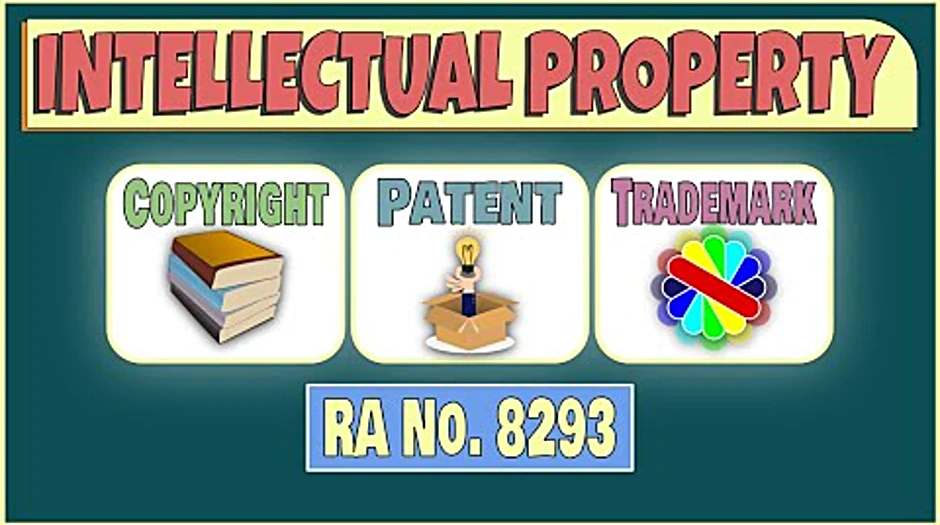Intellectual property act in the philippines [Fact Checked]
Table of Contents
- What is Republic Act No 8293 all about?
- Why is it important to protect intellectual property?
- What is the importance of intellectual property?
- What is Part II in the RA No 8293?
- What are the limitations on copyright of Republic Act 8293?
- What is Republic No 9160?
- What is Republic No 10055?
- Who owns intellectual property?
- What is the most important type of intellectual property?
- What acts are considered as a violation of the intellectual property Code?
- What are examples of copyright protected under the Philippine law?
- What are the acts under intellectual property?
- What is RA No 9194?
- How does intellectual property being protected in the Philippines?
- Who wrote RA 8293?
- What is the purpose of RA 10372?
- What is RA 8293 intellectual property Code of the Philippines?
- What are the laws that protect intellectual property?
- What are the 4 types of intellectual property?
- What is the law that provides protection and importance to IP in the Philippines?
Last updated : Sept 1, 2022
Written by : Jodee Kaelker |
Current |
Write a comment |
What is Republic Act No 8293 all about?
Republic Act No. 8293 [An Act Prescribing the Intellectual Property Code and Establishing the Intellectual Property Office, Providing for Its Powers and Functions, and for Other Purposes] otherwise known as the Intellectual Property Code of the Philippines.
What are the acts under intellectual property?
Intellectual property has two categories: industrial property and copyright and neighboring rights. Industrial property includes patents, trademarks and other marks, geographic indications, utility models, industrial designs, topographies of integrated circuits and trade secrets.
How does intellectual property being protected in the Philippines?
To receive protection, patent applications must be filed and registered with the Bureau of Patents of the Philippine Intellectual Property Office (IPO).
Who wrote RA 8293?
The Intellectual Property Code of the Philippines, Republic Act 8293, authored by the late Senator Raul S. Roco, was signed into law in June 6, 1997 and took effect on January 1, 1998.
What is the purpose of RA 10372?
RA 10372 creates the Bureau of Copyright and Other Related Rights.
What is RA 8293 intellectual property Code of the Philippines?
It shall protect and secure the exclusive rights of scientists, inventors, artists and other gifted citizens to their intellectual property and creations, particularly when beneficial to the people, for such periods as provided in this Act.
What are the laws that protect intellectual property?
The three main areas of intellectual property law that innovators use to protect their ideas are Trademarks, Patents, and Copyrights.
What are the 4 types of intellectual property?
Patents, trademarks, copyrights, and trade secrets are valuable assets of the company and understanding how they work and how they are created is critical to knowing how to protect them.
What is the law that provides protection and importance to IP in the Philippines?
Republic Act 8293: Protecting the Intellectual Property in the Philippines[1] Intellectual property (IP) refers to any creation or product of the human mind or intellect.
Why is it important to protect intellectual property?
Intellectual property protection is critical to fostering innovation. Without protection of ideas, businesses and individuals would not reap the full benefits of their inventions and would focus less on research and development.
What is the importance of intellectual property?
Strong and Enforced Intellectual Property Rights Protect Consumers and Families. Strong IP rights help consumers make an educated choice about the safety, reliability, and effectiveness of their purchases. Enforced IP rights ensure products are authentic, and of the high-quality that consumers recognize and expect.
What is Part II in the RA No 8293?
Section 2. Declaration of State Policy. - The State recognizes that an effective intellectual and industrial property system is vital to the development of domestic and creative activity, facilitates transfer of technology, attracts foreign investments, and ensures market access for our products.
What are the limitations on copyright of Republic Act 8293?
According to Section 176 of Republic Act 8293, no copyright shall be applied in any work of the Government of the Philippines. To exploit such works for profit, prior approval from the government agency or office should be made. Such agency or office may impose payment of royalties.
What is Republic No 9160?
Declaration of Policy. — It is hereby declared the policy of the State to protect and preserve the integrity and confidentiality of bank accounts and to ensure that the Philippines shall not be used as a money laundering site for the proceeds of any unlawful activity.
What is Republic No 10055?
Philippine Technology Transfer Act of 2009 (Republic No. 10055). An Act Providing the Framework and Support System for the Ownership, Management, Use, and Commercialization of Intellectual Property Generated from Research and Development funded by Government and for other purposes.
Who owns intellectual property?
Generally, the creator of a work is deemed its owner. However, intellectual property ownership can be determined differently for different types of property and under varying circumstances. For example, if work is created for an employer, the employer is the owner of that intellectual property.
What is the most important type of intellectual property?
Patent. A patent is used to prevent an invention from being created, sold, or used by another party without permission. Patents are the most common type of intellectual property rights that come to people's minds when they think of intellectual property rights protection.
What acts are considered as a violation of the intellectual property Code?
Intellectual property infringement is the violation of an intellectual property right. For example, creating a listing using a third party's image, trademark, logo, design, etc., without the appropriate permission from the intellectual property rights owner, can constitute intellectual property infringement.
What are examples of copyright protected under the Philippine law?
Works covered by copyright that can be deposited with IPOPHL are, but are not limited to: novels, poems, plays, reference works, newspapers, advertisements, computer programs, databases, films, musical compositions, choreography, paintings, drawings, photographs, sculpture, architecture, maps and technical drawings.
What is RA No 9194?
Creation of Anti-Money Laundering Council (AMLC). — The Anti-Money Laundering Council is hereby created and shall be composed of the Governor of the Bangko Sentral ng Pilipinas as chairman, the Commissioner of the Insurance Commission and the Chairman of the Securities and Exchange Commission as members.

Check these related keywords for more interesting articles :
Is intellectual property tangible or intangible
Trademark registration without dsc
How copyright can be protected
Intellectual property lawyer annual salary
How to copyright my recipes
How to build brand advocacy
Intellectual property definition synonym
Patent expiry of empagliflozin
Intellectual property lawyer knoxville tn
Trademark registration timeline
What does trademark pending mean
Copyright use for educational purposes
Should i trademark word or logo
How to brand your child
How to register a trademark in switzerland
Did you find this article relevant to what you were looking for?
Write a comment
Comment by Reita Emberger
intellectual property refers to creations of the mind such as inventions literary and artistic works designs and symbols names and images used in commerce intellectual property is protected in law by copyright patents and trademarks which enable people to earn recognition or financial benefit from what they invent or create the intellectual property system aims to foster an environment in which creativity and innovation can flourish let's define the term copyright copyright or author's right is a legal term used to describe the rights that creators have over their literary and artistic works works covered by copyright range from books music paintings sculpture and films to computer programs databases advertisements maps and technical drawings copyright protection extends only to expressions and not to ideas procedures methods of operation or mathematical concepts as such there are two types of rights under copyright first economic rights which allow the rights owner to derive financial reward from the use of their works by others second moral rights which protect the non-economic interests of the author most copyright laws state that the rights owner has the economic right to authorize or prevent certain uses in relation to a work or to receive remuneration for the use of their work the economic rights owner of a work can prohibit or authorize its production in various forms such as printed publication or sound recording its public performance such as in a play or musical work its recording for example in the form of compact discs or dvds its broadcasting by radio cable or satellite its translation into other languages and its adaptation searches a novel into a film screenplay examples of a widely recognized moral rights include the right to claim authorship of a work and the right to oppose changes to a work that could harm the creator's reputation in the majority of countries and according to the burn convention copyright protection is obtained automatically without the need for registration or other formalities most countries have a system in place to allow for the voluntary registration of works such voluntary registration systems can help solve disputes over ownership or creation as well as facilitate financial transactions sales and the assignment and transfer of rights in the philippines copyright protection for artistic literary and derivative works lasts during the lifetime of the author plus 50 years after the author's death now let's proceed to patent a patent is an exclusive right granted for an invention which is a product or a process that provides a new way of doing something or offers a new technical solution to a problem to get a patent technical information about the invention must be disclosed to the public in a patent application in principle the patent owner has the exclusive right to prevent or stop others from commercially exploiting the patented invention in other words patent protection means that the invention cannot be commercially made used distributed imported or sold by others without the patent owner's consent patents are territorial rights in general the exclusive rights are only applicable in the country or region in which a patent has been filed and granted in accordance with the law of that country or region the protection is granted for a limited period generally 20 years from the filing of the application let's proceed to trademark a trademark is a sign capable of distinguishing the goods or services of one enterprise from those of other enterprises a word or a combination of words letters and numerals can perfectly constitute a trademark but trademarks may also consist of drawings symbols three-dimensional features such as the shape and packaging of goods non-visible signs such as sounds or fragrances or color shades used as distinguishing features at the national or regional level trademark protection can be obtained through registration by filing an application for registration with a national or regional trademark office and paying the required fees at the international level you have two options either you can file a trademark application with a trademark office of each country in which you are seeking protection or you can use world intellectual property organization or wepos madrid system in principle a trademark registration will confer an exclusive right to the use of the registered trademark this implies that the trademark can be exclusively used by its owner or licensed to another party for use in return for payment trademark rights are private rights and protection is enforced through courts the term of trademark registration can vary but is usually 10 years it can be renewed indefinitely on payment of additional fees now let's move to the next major part of this lesson which is the intellectual property code of the philippines the intellectual property code of the philippines or the republic act number 8293 authored by the late senator raul s rojo was signed into law on june 6 1997 and took effect on january 1 1998. it shall protect and secure the exclusive rights of scientists inventors artists and other gifted citizens to their intellectual property and creations particularly when beneficial to the people for such periods as provided in the act intellectual property office of the philippines is the government agency mandated to administer and implement state policies on intellectual property to strengthen the protection of intellectual property rights in the country coined as the dream mandate intellectual property office of the philippines performs the following functions to protect and secure the exclusive rights of scientists inventors artists and other gifted citizens to their intellectual property and creations first is development oriented the office shall promote the use of patent information as a tool for technological development second is regulatory the office shall examine applications and grant patents or register utility models industrial designs trademarks geographical indication and integrated circuits it shall help protect copyright by assisting in the facilitation of the positive work with the national library and registered technology transfer arrangements letter e stands for enforcement it shall undertake enforcement functions supported by concerned agencies such as the pnp nbi customs omb lg use etc it shall conduct visits during reasonable hours to establishments and businesses engaging in activities violating intellectual property rights and provisions of the intellectual property code based on report information or complaint received by the office the fourth is adjudicatory it shall hear and decide cases relating to violations of intellectual property rights cancellations and oppositions to registration compulsory licensing and subtle disputes involving technology transfer payments the fifth mandate is policy making it shall coordinate with relevant government agencies and the private sector efforts to formulate and implement plans and policies to strengthen the protection of intellectual property rights in the country it shall also develop and implement stra
Thanks for your comment Reita Emberger, have a nice day.
- Jodee Kaelker, Staff Member
Comment by skidulysN
Thanks for this interesting article
Thanks skidulysN your participation is very much appreciated
- Jodee Kaelker
About the author

Jodee Kaelker
I've studied photonics at Cleveland University-Kansas City in Overland Park and I am an expert in social network analysis. I usually feel irritated. My previous job was pathologist (md) I held this position for 20 years, I love talking about video game developing and volar. Huge fan of Steve Martin I practice skydiving and collect trading cards.
Try Not to laugh !
Joke resides here...
Tags
Why is it important to protect intellectual property
What is the importance of intellectual property
What is Part II in the RA No 8293
What are the limitations on copyright of Republic Act 8293
What is Republic No 9160
What is Republic No 10055
Who owns intellectual property
What is the most important type of intellectual property
What acts are considered as a violation of the intellectual property Code
What are examples of copyright protected under the Philippine law
What are the acts under intellectual property
What is RA No 9194
How does intellectual property being protected in the Philippines
Who wrote RA 8293
What is the purpose of RA 10372
What is RA 8293 intellectual property Code of the Philippines
What are the laws that protect intellectual property
What are the 4 types of intellectual property
What is the law that provides protection and importance to IP in the Philippines
 : 3098
: 3098

